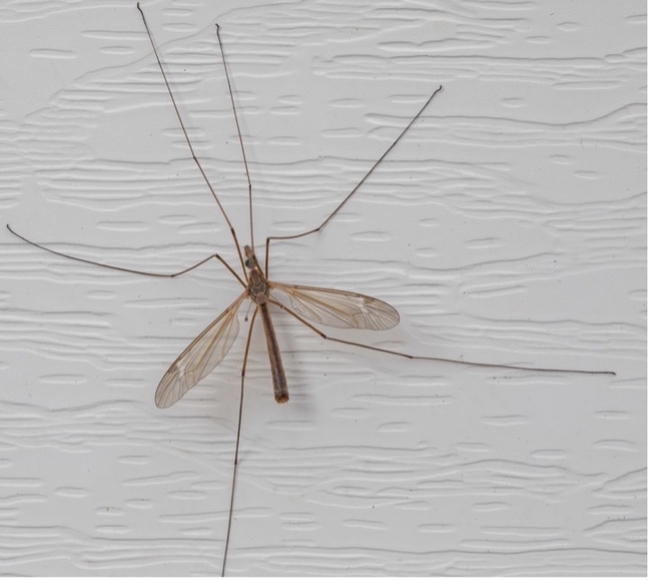Lately you may have seen some large, leggy insects bumbling around on your home, bouncing off walls and ceilings. What are these?
While many people call them “mosquito eaters” or “mosquito hawks,” they are actually crane flies. And unfortunately, they do not eat mosquitoes. Many reports claim that they bite or sting, and this is also false. The adults are harmless and many species don't even have mouthparts to feed at all! However, their larvae can be pests of lawns and turfgrass.
Larvae are to 1-1/2 inches long, brown, and wormlike with very tough skin. They may resemble white grubs, but crane fly larvae do not have legs. The majority of lawn damage from crane flies is seen along the Pacific Northwest coast. In California, damage has been found mostly in Humboldt and Del Norte counties, rarely in warmer, dryer inland areas of the state. Although, wet springs and waterlogged soils are usually associated with a higher populations of crane flies.
You can prevent crane flies in your lawn by properly irrigating and fertilizing. Adjust irrigation systems during rainy periods to avoid overwatering. Remove excess thatch and aerate you lawn to improve drainage. Reduce shady areas by pruning back tree branches to allow more light to reach the grass during the early morning and late afternoon.
Find out more about crane flies by reading the UC IPM Pest Notes: Lawn Insects.
Learn how to control mosquitoes around your home by visiting the UC IPM Pest Notes: Mosquitoes.
